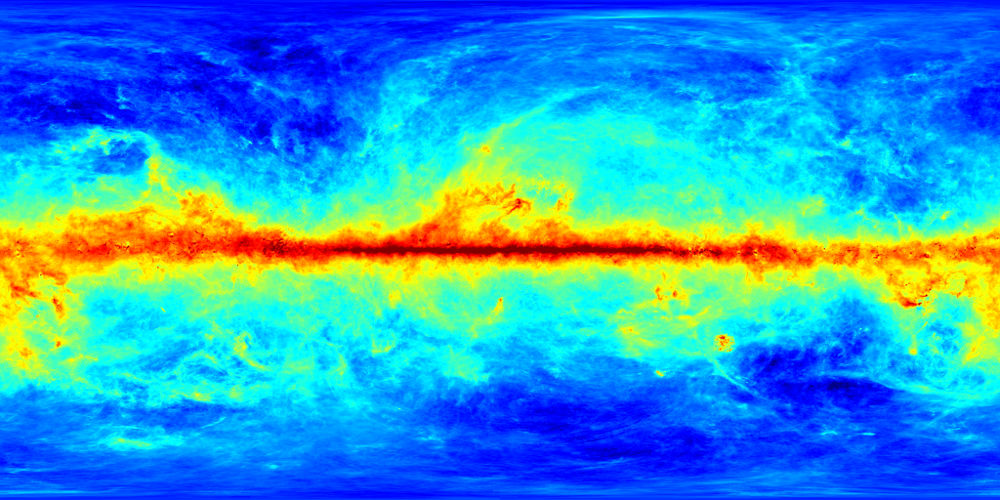Building a 3D Map of Milky-Way Dust
Gregory Green, Edward Schlafly & Douglas Finkbeiner
Local Group Astrostatistics
University of Michigan, 2 June 2015
Why construct a 3D map of dust?
2D maps already exist

Schlegel, Finkbeiner & Davis (1998)
Limitations of (emission-based) 2D dust maps
- Inadequate for objects in plane of Galaxy, and close-by objects
- Systematics in modeling of dust emission, and conversion to extinction
Some possible uses of 3D dust maps
- Extinction/reddening corrections in plane of Galaxy
- Distances to objects of known reddening
- Inference of Galactic structure: streams, spiral arms, disk scale heights, etc.
- Different types of systematics than dust emission-based maps
What our map looks like...
Looking towards the Galactic anticenter
50 pc orbit about the Sun
Traveling through the Milky Way
Integrated Reddening:
Galactic anticenter
Integrated Reddening:
$50^{\circ} \leq \ell \leq 100^{\circ}$
Integrated Reddening:
Aquila South
How is the map constructed?
- We have some idea of the what stars should look like
- Stars are reddened by foreground dust
- Each star therefore acts as a tracer of the dust column out to some point in space
- By inferring reddening to hundreds of millions of stars across the sky, we can build up a 3D dust map
Pixelization
Assume all stars in one pixel trace the same reddening column
Model Parameters
| $\hphantom{\mu_{k} ,\,} \Delta E_{j} ,$ | $\ \ j = 1, \ldots , n_{\mathrm{bins}}$ |
| $\mu_{k} ,\,$ $\delta_{k} ,\,$ $\Theta_{k} ,$ | $\ \ k = 1, \ldots , n_{\mathrm{stars}}$ |
$$
\left.
\vphantom{
\begin{align}
\Delta E_{j} \\
\Theta_{k} \\
\Theta_{k}
\end{align}
}
\right\} \Rightarrow \vec{m}_{k}
$$